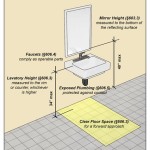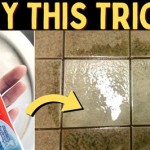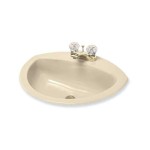How To Make A Bathroom Sink Backsplash
A bathroom sink backsplash is a great way to add style and protection to your bathroom. It can also help to prevent water damage to your walls. If you're thinking about adding a backsplash to your bathroom, there are a few things you'll need to do to get started.
1. Choose a material
The first step is to choose a material for your backsplash. There are a variety of materials available, including tile, stone, glass, and metal. Each material has its own unique advantages and disadvantages, so it's important to do your research before making a decision.
Tile is a popular choice for bathroom backsplashes because it's durable, easy to clean, and available in a wide variety of colors and styles. Stone is another durable option, but it can be more expensive than tile. Glass is a beautiful option, but it can be more difficult to clean and maintain. Metal is a durable and stylish option, but it can be more expensive than other materials.
2. Measure your space
Once you've chosen a material, you'll need to measure your space to determine how much you'll need. To do this, measure the width and height of the area behind your sink.
3. Cut the material
Once you know how much material you need, you'll need to cut it to size. If you're using tile, you can use a wet saw to cut the tiles. If you're using stone, you'll need to use a diamond-tipped saw blade. If you're using glass, you'll need to use a glass cutter.
4. Install the material
Once the material is cut, you'll need to install it. If you're using tile, you'll need to apply thinset mortar to the back of the tiles and then press them into place. If you're using stone, you'll need to use a mortar specifically designed for stone. If you're using glass, you'll need to use a silicone adhesive.
5. Grout the joints
Once the material is installed, you'll need to grout the joints. Grout is a type of mortar that is used to fill the gaps between the tiles. To apply grout, simply mix it with water according to the manufacturer's instructions and then spread it over the joints. Once the grout has dried, you can wipe away any excess with a damp sponge.
6. Seal the backsplash
Once the grout has dried, you'll need to seal the backsplash. This will help to protect it from water damage. To seal the backsplash, simply apply a clear sealer according to the manufacturer's instructions.
7. Enjoy your new backsplash!
Once the sealer has dried, you can enjoy your new bathroom sink backsplash. It will add style and protection to your bathroom, and it will help to prevent water damage to your walls.

Small Bathroom Remodel Easy Diy Tile Backsplash Engineer Your Space

Brilliant Bathroom Backsplash Ideas Family Handyman

Small Bathroom Remodel Easy Diy Tile Backsplash Engineer Your Space

10 Amazing Bathroom Backsplash Ideas To Beautify Your Bath Simple Designs Diy Vanity

Small Bathroom Remodel Easy Diy Tile Backsplash Engineer Your Space

62 Bathroom Backsplash Ideas For A Stylish Makeover White Subway Tile Vanity Classic

Brilliant Bathroom Backsplash Ideas Family Handyman

Unique Bathroom Vanity Backsplash Ideas Glass Stone Ceramic Tile

Dollar Tree Diy Backsplash Budget Friendly Bathroom Reno Hometalk

29 Bathroom Backsplash Height Best For
Related Posts







